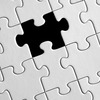Control room design can have a big influence on the ability of the Control Room Operators to perform their role effectively. In particular:
- A good quality HMI can ensure they have the data they need in a useful format;
- The working environment can affect health and alertness;
- Physical design and provision of equipment can support effective communication.
Unfortunately, despite the availability of standards and guidance, the design of many control rooms fails to achieve good practice. EEMUA has recognised an opportunity to update and develop its existing guidance document EEMUA 201 to become a more complete, practical and useable guide to control room design.
Two barriers to adoption of existing standards and guidance have been identified:
- Engineers assigned the responsibility for designing control rooms do not recognise the importance of adopting human factors principles
- Guidance is perceived as impractical or inappropriate for ‘real life’ application.
In order to overcome these barriers the updated guidance reflects the practicalities of engineering projects. Also, input has been gained from experienced Control Room Operators in addition to Human Factors Consultants, Control Room Designers and Regulators to determine what the guidance needs to say and how it should be presented.
Wilde Analysis’ Associate Consultant, Andy Brazier will be presenting a paper on this updated guidance at the forthcoming HAZARDS 29 on 22nd – 24th May. The paper summarises the contents of the updated guidance, highlighting how it can be used to optimise control room design in order to reduce process safety risks.
It will discuss the issues where views of experienced Control Room Operators differ significantly from current theory and explain how these can be rationalised in practice. Key messages will include the requirement to consider human factors from the very inception of a control room project and to ensure active participation of Control Room Operators throughout.
The updated version of EEMUA 201 includes a number of templates that can be used by project teams to guide them through the various design stages so that they develop an optimum solution whilst utilising best practices.
To book your place at HAZARDS 29, or for further information please visit our event page.
To learn more about ‘Control Room Design – Guidance Document EEMUA 201 3rd Edition Updated 2018 ‘, or for further information on Wilde Analysis’ safety and reliability products and services, please contact us.






EEMUA contracted Wilde Analysis to re-write ‘Publication 201’ of their Control Room Design – Guidance Document. The work was jointly funded by Wilde Analysis Ltd and the Engineering Equipment and Materials Users Association (EEMUA) and supported by the EEMUA Process Control Desk Design Working Group with input from the Health and Safety Executive (HSE).